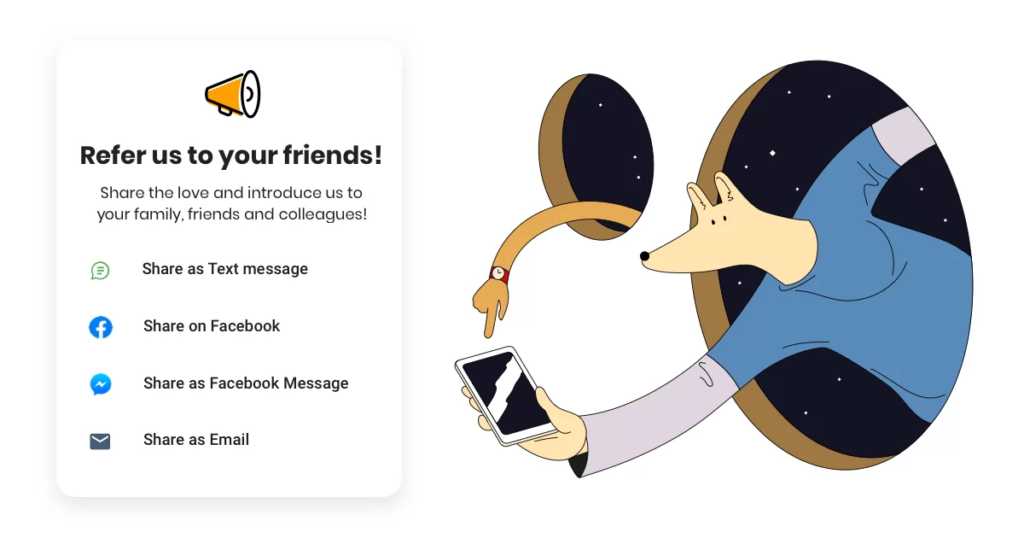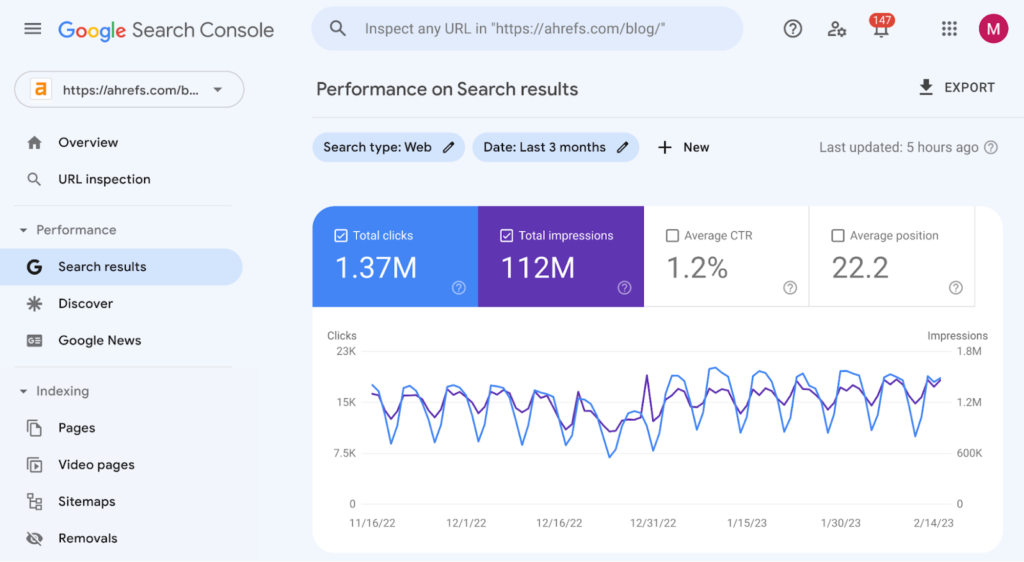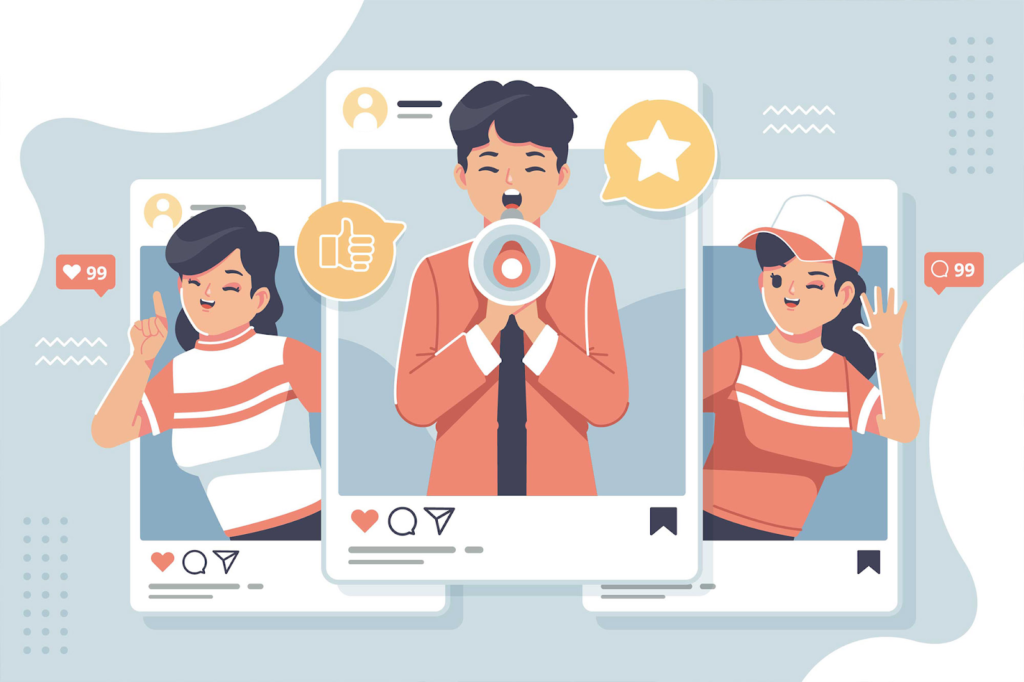According to recent studies, the cost-per-click (CPC) on platforms like Google and Meta has increased by 15-20% in the past year. This means businesses are spending more on ads but may not see a return on their investment. For small and medium-sized businesses, this can be a huge challenge.
But here’s the good news: you don’t need to rely on paid ads to drive sales. There are proven organic strategies that can help you grow sustainably, without draining your marketing budget. By focusing on organic growth, you can build lasting customer relationships, increase brand loyalty, and drive sales—without paying for every click or impression.
In this blog, we’ll explore five effective ways to boost your sales without using paid ads. Whether you’re a startup or an established business, these strategies will help you achieve growth while keeping your marketing costs under control.
1) – Email Marketing: A Simple, Powerful Tool to Increase Sales.

According to industry data, nearly 80% of new leads never convert into sales. Why? One major reason is a lack of proper nurturing. Many marketers either forget about their leads after the initial contact or fail to send the right message at the right time. When this happens, potential customers simply lose interest and move on.
Why Email Marketing Works
According to studies, email has an average ROI of $36 for every $1 spent. That’s higher than any other form of marketing! It’s no wonder that 64% of small businesses use email marketing to reach their customers.
Tactics to Get the Most Out of Your Email Marketing
1. Segment Your Audience for Personalized Content
Not all leads are the same, and they shouldn’t be treated that way. By segmenting your email list, you can send personalized messages to different groups based on their interests, behavior, or stage in the sales funnel. For example, someone who signed up for your newsletter might need a different message than someone who abandoned their cart.
Personalized emails have a higher open rate of 26% compared to non-segmented emails. Tailor your content, offers, and tone to match what each segment cares about.
2. Use Automated Email Sequences
Automation is a game-changer in email marketing. Instead of sending one-off emails, you can create automated sequences that go out based on specific triggers or actions. Here are two common automated sequences that can drive great results:
- Welcome Series: This is the first interaction someone has after joining your list. A good welcome series introduces your brand, sets expectations, and gives value upfront.
- Cart Abandonment Reminders: When someone adds products to their cart but doesn’t check out, you can send them reminders with personalized offers to encourage them to complete the purchase.
Automated emails generate 320% more revenue than regular promotional emails. Why? Because they’re timely and relevant to the customer’s actions.
3. Optimize Subject Lines and CTAs for Engagement
The subject line is the first thing your audience sees – and it determines whether they’ll open your email. A compelling subject line should be clear, concise, and create curiosity. For example, instead of “Check out our latest products,” try something like, “Don’t Miss Our Exclusive Offer Inside.”
Equally important is the call to action (CTA). Your email’s purpose is to get the recipient to take action, whether it’s visiting your website, downloading a guide, or making a purchase.
Make your CTA button or link stand out, and keep the language direct: “Shop Now,” “Get 20% Off,” or “Download Your Free Guide.”
A lead magnet is a free resource you offer in exchange for a person’s email address. It could be:
- An e-book on a topic your audience is interested in.
- A webinar that provides valuable insights or solves a problem.
- A free tool or template that makes their life easier.
2. Build a Strong Referral Program

Word-of-mouth marketing has always been a powerful tool. 92% of consumers trust recommendations from friends and family over any other form of advertising. When your satisfied customers share your business with others, it feels authentic, personal, and credible—things that no ad can replicate.
A referral program takes this natural word-of-mouth process and gives it structure, ensuring the customer and their friends feel motivated to participate. And the best part? It can generate steady leads with little to no advertising costs.
Tactics to Build an Effective Referral Program
Here are some simple but effective ways to create a strong referral program that drives sales:
1. Create Incentive-Based Referral Programs
People are more likely to recommend your business if they know there’s something in it for them. Offer incentives like discounts, free products, or exclusive access to services. This makes customers feel valued and motivates them to share your brand.
Example: Offer a 10% discount to both the referrer and the referee when someone makes a successful referral.
2. Encourage User-Generated Content and Social Sharing
Make it easy for your satisfied customers to promote you on social media. You can encourage them to post reviews, photos, or testimonials. These posts act as recommendations and help spread the word about your brand.
Example: Ask customers to share a photo of themselves using your product on Instagram, tagging your brand for a chance to win a freebie or discount.
3. Reward Both the Referrer and the Referee
For maximum participation, ensure that both the person referring and the new customer receive a reward. This encourages more people to get involved and creates a win-win situation for everyone.
Example: If a customer refers a friend, both should receive a reward—whether it’s a free product, a discount, or loyalty points. This way, everyone benefits, and it boosts the likelihood of future referrals.
3. Master SEO for Long-Term Results

According to studies, 70% of marketers report struggling with driving traffic organically, and over 60% say that increasing visibility on search engines is their top priority.
The good news? Search engine optimization (SEO) is a powerful, long-term solution to drive traffic without paying for ads. By mastering SEO, you can organically attract customers who are actively searching for products or services like yours.
Let’s dive into how SEO can help and the exact steps you can take to improve your website’s rankings.
1. Perform Keyword Research to Find High-Intent Search Terms
The first step to improving your SEO is understanding what your potential customers are searching for. You need to find keywords that are not only popular but also show buying intent.
How to do it:
- Use free tools like Google Keyword Planner or Ubersuggest to find relevant keywords.
- Look for terms that have decent search volume and low competition.
- Focus on long-tail keywords—phrases that are more specific (e.g., “affordable wedding planners in Mumbai” instead of just “wedding planners”).
Why it works: High-intent keywords mean that the people searching for them are likely ready to make a purchase, increasing your chances of conversion.
2. Focus on Creating Long-Form, Value-Driven Content
Once you have your keywords, the next step is to create content that answers your audience’s questions. Search engines love long-form content (around 1,500 to 2,000 words) because it tends to provide more value and depth.
How to do it:
- Write blog posts, guides, or case studies that solve specific problems for your target audience.
- Ensure that the content is easy to read, well-structured, and includes your target keywords naturally.
- Use headings, bullet points, and images to break up the text and make it more engaging.
Why it works: Quality content keeps readers on your page longer, which signals to search engines that your site is valuable, improving your rankings over time.
3. Optimize On-Page Elements (Titles, Meta Descriptions, Alt Text)
To make sure search engines understand what your page is about, you need to optimize key on-page elements.
How to do it:
- Title Tags: Include your primary keyword in the title, and keep it under 60 characters.
- Meta Descriptions: Write a short, catchy description (150–160 characters) that includes your main keyword and entices users to click.
- Alt Text for Images: Always add descriptive alt text to your images that include relevant keywords. This helps search engines index your visuals and improves accessibility.
Why it works: These elements help search engines categorize your content properly, making it more likely to appear in relevant searches.
4. Improve Technical SEO (Site Speed, Mobile Optimization)
Technical SEO is about making sure your website runs smoothly. Search engines prefer sites that load fast and are easy to navigate on mobile devices.
How to do it:
- Site Speed: Compress images, enable browser caching, and remove unnecessary code to make your site load faster. Tools like Google PageSpeed Insights can help you identify slow-loading areas.
- Mobile Optimization: Use a responsive design so that your website automatically adjusts to any screen size. Most people now browse the web on mobile, and search engines prioritize mobile-friendly sites.
Why it works: A faster, mobile-friendly site improves user experience, which means visitors are more likely to stay on your page—and search engines will rank your site higher as a result.
4. Collaborate with Influencers and Brand Ambassadors

Influencer marketing helps businesses reach new audiences organically, without spending big on ads. Instead of pushing your message out with paid promotions, you let trusted voices in your niche talk about your product or service. This builds trust and credibility with their audience, leading to higher engagement and more potential sales.
Let’s break down how you can use influencers and brand ambassadors to expand your reach and grow your sales without relying on ads.
1. Partner with Micro-Influencers or Niche Experts
Micro-influencers are individuals with smaller, but highly engaged, followings. They are often experts in specific areas or communities. For example, a fitness brand might partner with a micro-influencer who is well-known in the local yoga community.
Why this works: Micro-influencers may not have millions of followers, but their audience trusts them more deeply. They also tend to be more affordable than bigger influencers. When they share honest opinions about your product, their followers are more likely to listen and take action.
Example: A beauty brand could send products to a micro-influencer in the skincare space. The influencer shares a review on Instagram, showing their audience how the product works. This creates genuine interest in your product without the need for paid promotions.
2. Focus on Value-Based Collaborations
Rather than just asking influencers to post a picture or mention your product, aim for value-based collaborations that provide something useful or entertaining to their audience. This could be product reviews, giveaways, or guest blog posts.
Why this works: Value-based content creates a deeper connection between the influencer and their audience. It feels less like an ad and more like a recommendation from a friend. Giveaways, in particular, can generate excitement and engagement, bringing in new followers and potential customers.
Example: A fashion brand might collaborate with an influencer to do a giveaway where the winner receives a free outfit. This type of promotion excites the influencer’s audience, encouraging them to follow your brand, engage with the post, and enter the contest.
3. Use Ambassadors to Build Long-Term Trust
While influencers may promote your brand for a short period, brand ambassadors create longer-term relationships. Brand ambassadors are people who genuinely love your product and consistently talk about it. Over time, they become trusted advocates for your brand.
Why this works: Long-term relationships with ambassadors help build continuous trust and authenticity. Since they are not just doing a one-off post, their audience begins to see them as a true representative of your brand, leading to more loyal customers.
Example: A fitness company could recruit athletes or trainers to act as brand ambassadors. These ambassadors could regularly post about how they use the company’s products in their everyday life, adding a level of authenticity that attracts potential buyers.
Expert Tip: Prioritize Engagement Over Follower Count
When choosing influencers or ambassadors, it’s easy to get distracted by large follower numbers. However, what really matters is engagement. An influencer with 5,000 followers who regularly interacts with their audience is far more valuable than someone with 100,000 followers and low engagement.
Why this works: High engagement means the influencer’s audience is actively interested in what they post. This means they are more likely to pay attention to your brand when the influencer talks about it.
5. Optimize Your Social Media Organic Reach

Organic reach on Facebook is as low as 5.2% for pages, meaning only a fraction of your followers are seeing your posts. For small businesses or those with tight budgets, this can be a real challenge.
How to Grow and Engage with an Audience Without Paying for Ads
To effectively increase your organic reach, your content needs to be engaging, shareable, and relevant to your audience. Social media algorithms favor content that sparks conversations, gets shared, or keeps users on the platform longer. Here are the tactics you can start using today:
1. Leverage Video Content for Viral Reach
Video content is taking over social media. Platforms like Instagram, TikTok, and YouTube are favoring short, engaging videos that capture users’ attention. Instagram Reels, TikTok videos, and YouTube Shorts are some of the best tools to organically boost your content.
- Why it works: Videos naturally attract more engagement and are prioritized by social algorithms. Short-form videos, especially, are more likely to be shared and discovered by new audiences.
- Pro tip: Make the first few seconds count! Use a hook to grab attention and keep your videos concise.
2. Create Engaging and Shareable Content
Content that encourages users to participate is key. Think beyond basic posts – you need content that drives interaction.
- Polls & Quizzes: Polls, quizzes, and question stickers (especially on Instagram Stories) invite users to engage. These simple interactions send signals to the algorithm that your content is valuable, boosting your organic reach.
- Behind-the-scenes content: People love to see what goes on behind the curtain. Whether it’s showing how your product is made or giving a peek into your workday, behind-the-scenes content adds a personal touch that resonates with your audience.
3. Engage with Followers to Build Community Trust
One of the simplest yet most powerful ways to grow your organic reach is by directly engaging with your followers. Responding to comments, answering questions in direct messages (DMs), and participating in conversations show your followers that you care.
- Why it works: The more interaction your posts get, the more likely the platform will push your content to a wider audience. Also, when users see that you are active and approachable, they are more likely to engage with your future posts.
- Pro tip: Run regular Q&A sessions on Instagram Stories or host live sessions to answer common questions. This boosts engagement and helps build a community around your brand.
Conclusion :
Increasing sales without using paid ads may seem daunting, but with the right strategies in place, it’s entirely achievable. By focusing on building genuine connections, optimizing your social media for organic reach, leveraging email marketing, mastering SEO & using referrals and collaborations, you can drive sustainable growth for your business. These methods not only help you increase sales but also foster deeper relationships with your customers, building long-term brand loyalty.


